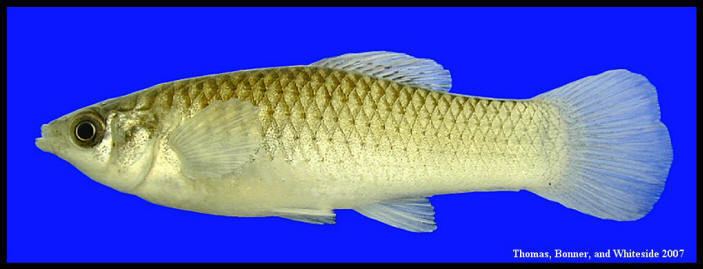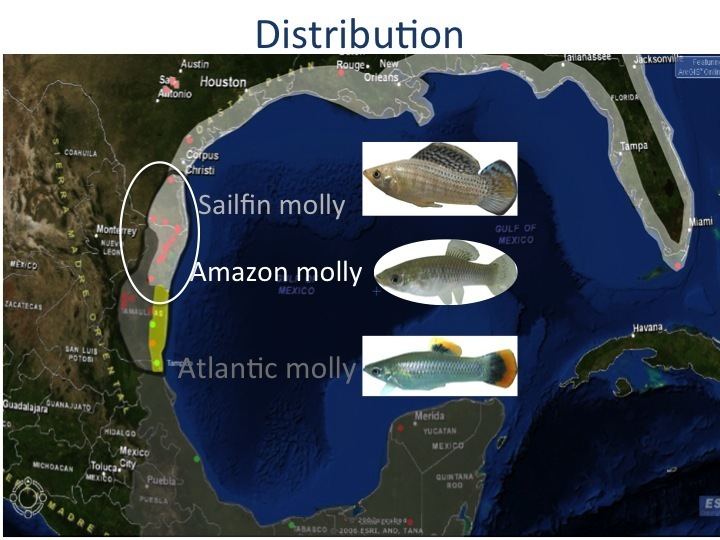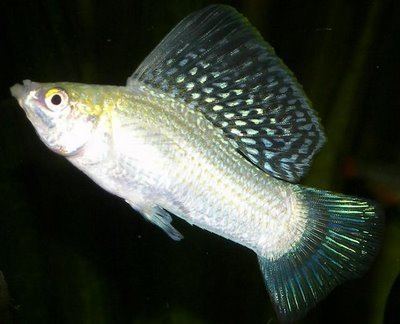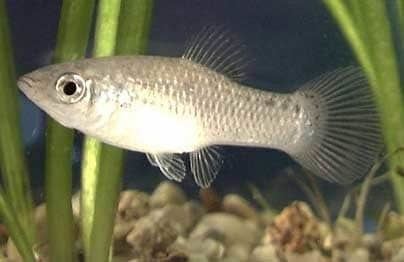Higher classification Poecilia | Phylum Chordata Scientific name Poecilia formosa Rank Species | |
 | ||
Similar Poecilia, Poecilia mexicana, Sailfin molly, Poeciliidae, Poeciliopsis | ||
Amazon molly it s a fish
The Amazon molly (Poecilia formosa) is a freshwater fish which reproduces through gynogenesis. This means although females must mate with a male, genetic material from the male is not incorporated into the already diploid egg cells the mother is carrying (except in extraordinary circumstances), resulting in clones of the mother being produced en masse. This characteristic has led to the Amazon molly becoming an all-female species. The common name acknowledges this trait as a reference to the Amazon warriors, a female-run society in Greek mythology. They are native to warm, fresh waters of northeastern Mexico and to the extreme southern parts of the U.S. state of Texas on the Rio Grande and the Nueces River.
In nature, the Amazon molly typically mates with a male from one of four different species, either P. latipinna, P. mexicana, P. latipunctata, or occasionally P. sphenops. One other male that could possibly exist in the Amazon molly's natural range that could induce parthenogenesis in Amazon molly females is the triploid Amazon molly males. These triploid males are very rare in nature and are not necessary in the reproduction of the species, which is why the species is considered to be all female.

The Amazon molly reaches sexual maturity one to six months after birth, and typically has a brood between 60 and 100 fry (young) being delivered every 30–40 days. This lends itself to a large potential for population growth as long as host males are present. The wide variability in maturity dates and brood sizes is a result of genetic heritage, varying temperatures, and food availability. They become sexually mature faster and produce larger broods in warm (approximately 27 °C) water that provides an overabundance of food.[1]




